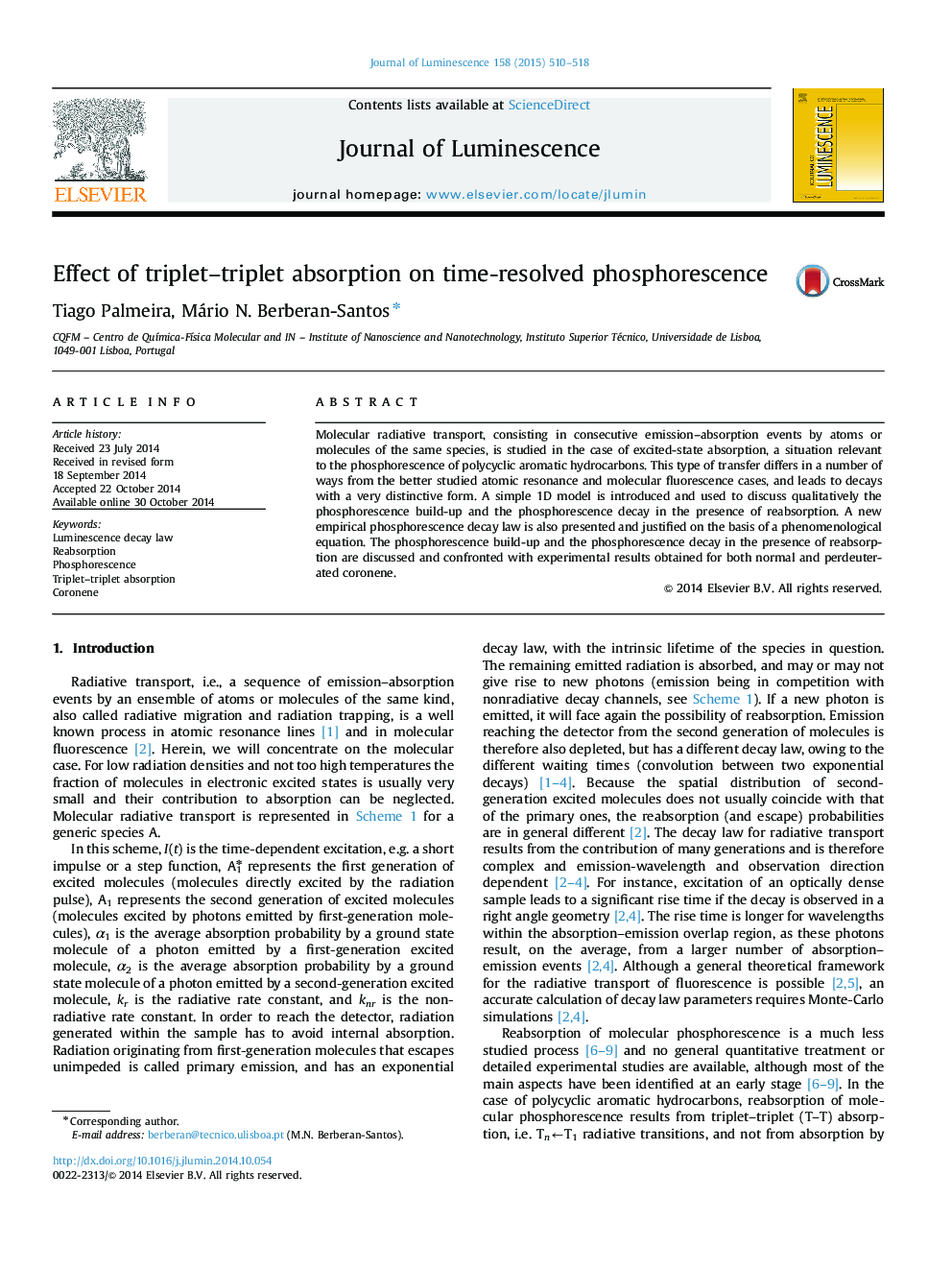| Article ID | Journal | Published Year | Pages | File Type |
|---|---|---|---|---|
| 5400000 | Journal of Luminescence | 2015 | 9 Pages |
Abstract
Molecular radiative transport, consisting in consecutive emission-absorption events by atoms or molecules of the same species, is studied in the case of excited-state absorption, a situation relevant to the phosphorescence of polycyclic aromatic hydrocarbons. This type of transfer differs in a number of ways from the better studied atomic resonance and molecular fluorescence cases, and leads to decays with a very distinctive form. A simple 1D model is introduced and used to discuss qualitatively the phosphorescence build-up and the phosphorescence decay in the presence of reabsorption. A new empirical phosphorescence decay law is also presented and justified on the basis of a phenomenological equation. The phosphorescence build-up and the phosphorescence decay in the presence of reabsorption are discussed and confronted with experimental results obtained for both normal and perdeuterated coronene.
Related Topics
Physical Sciences and Engineering
Chemistry
Physical and Theoretical Chemistry
Authors
Tiago Palmeira, Mário N. Berberan-Santos,
